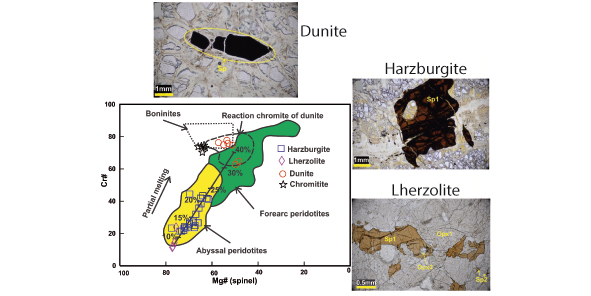Mineralogical and petrogenetic features of the peridotites and associated podiform chromitites from Abgarm ultramafic complex (south-eastern Iran)
DOI:
https://doi.org/10.13133/2239-1002/17215Keywords:
Abgarm ultramafic complex, Esfandagheh-Hajiabad coloured melange, Harzburgite, Chromitite, Boninite, subduction zoneAbstract
Abgarm ultramafic complex is a part of the Esfandagheh-Hajiabad coloured melange belt located in the south east of Iranian segment of Alpine-Himalayan orogenic belt. The complex has faulted contacts with flysch type sediments of upper cretaceous ophiolite melange complex. Harzburgite is the dominant lithotype, dunites and lherzolites also occur in lesser extents. Some dunites contain massive chromitite pods or bands. The chemistry of minerals of harzburgite samples reflects the depleted nature of these rocks and indicates that the Abgarm mantle experienced a melt extraction less than 30%. Geothermo-barometric estimates indicate that the harzburgitic Abgarm mantle have been initially equilibrated at temperatures between 809-923°C and then at 613-725 °C, in a range of pressures of 1.1 and 2.3 GPa. Moreover, fO2 calculation gives a redox state that is in a range of 0.7 log bar units above the fayalite–magnetite–quartz buffer FMQ (log = 0.1 ÷ 0.7 log-bar units).
Tectonomagmatic discrimination diagrams based on mineral compositions indicate that Abgarm harzburgite evolved as abyssal peridotite while Cr-spinel of chromitites probably fractionated from boninitic melts formed by the partial melting of the mantle wedge above the subduction zone.

Published
Issue
Section
License
Copyright (c) 2021 Periodico di Mineralogia

This work is licensed under a Creative Commons Attribution 4.0 International License.

